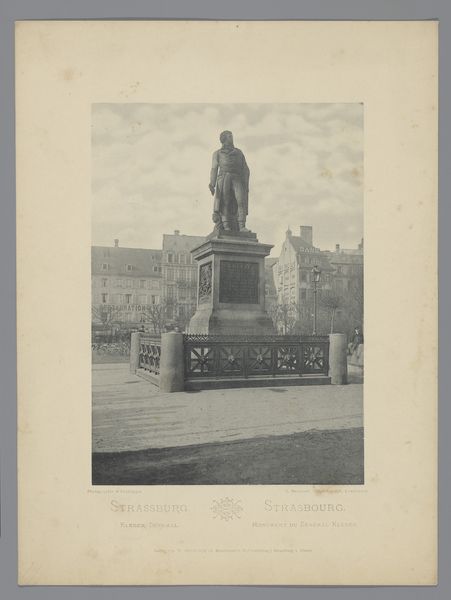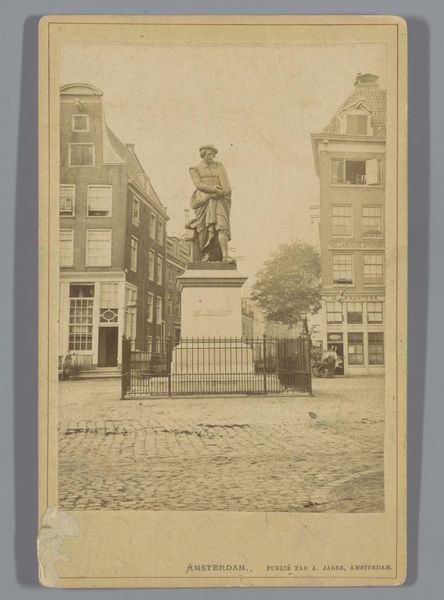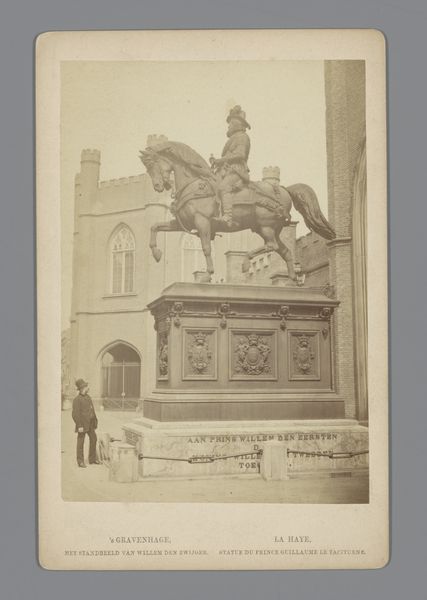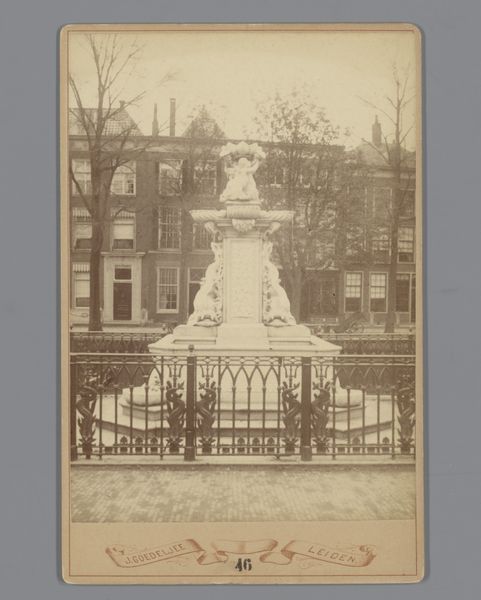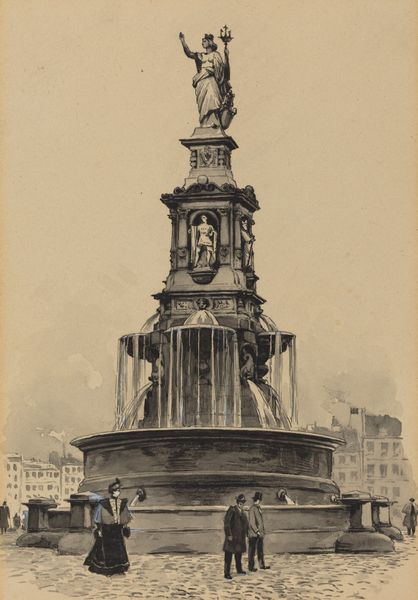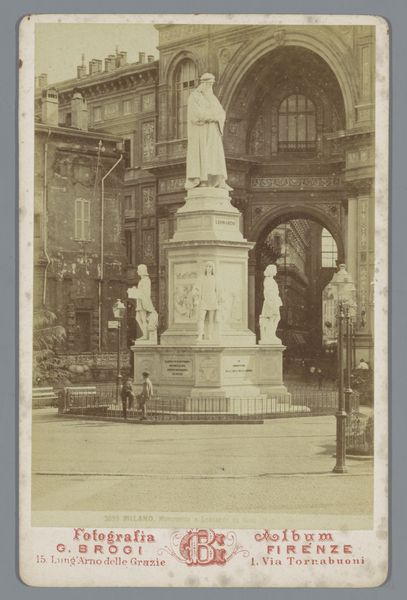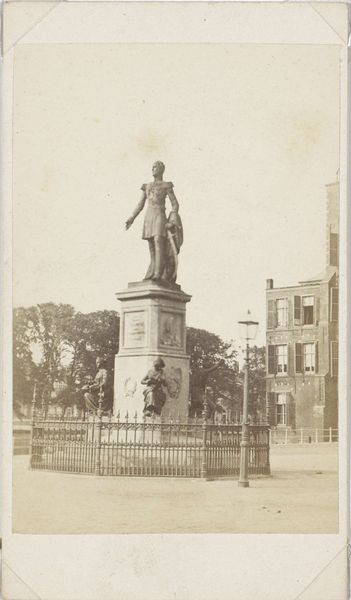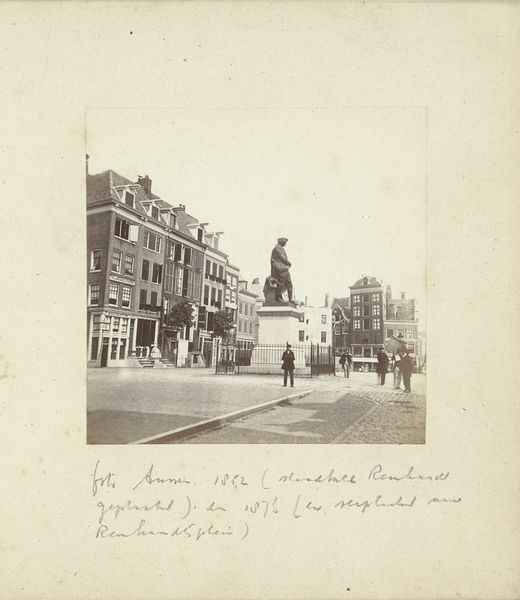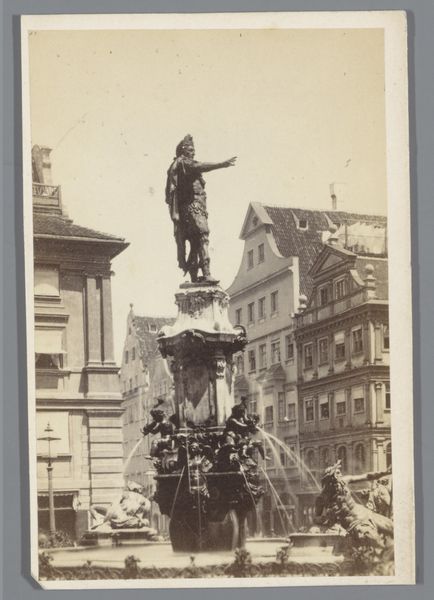
photography, albumen-print
#
portrait
#
landscape
#
photography
#
cityscape
#
albumen-print
Dimensions: height 164 mm, width 108 mm
Copyright: Rijks Museum: Open Domain
Curator: There’s a somber beauty to this scene. The sepia tones lend a gravitas to the event. What strikes you about it? Editor: Well, the photograph, dating between 1874 and 1893, is by Ed. Radermacher and titled "View of the 1872 Monument in the Nieuwemarkt in Rotterdam", and its density draws my eye immediately. The statue, obviously the centerpiece, feels crowded by the surrounding architecture and the assembled crowd. Curator: Exactly. Radermacher is capturing a very specific moment in Rotterdam’s civic life. Consider the statue itself—a female figure holding what looks like a hat aloft. What symbolic reading could be associated with such an iconic gesture? Editor: It makes me think about civic pride, about national identity perhaps still fragile after periods of upheaval, hence its proclamation by statuary and public gathering. This is meant for widespread consumption. We must remember photography at the time was rising in popularity for documentational and portraiture purposes. I'd say Radermacher captured that interest successfully here. Curator: Yes, photography provides access but also suggests permanence. The monument and the ritual surrounding it—the crowd gathered to observe—seek to establish a fixed point in the city’s collective memory, wouldn’t you say? Also, look at the symmetry achieved here—it seems to evoke the city’s own sense of order, reflected through the statue, the buildings, even the posture of some of the people within view. Editor: It does offer a controlled image, certainly, one aimed at projecting stability. Although there are also elements of real life intruding. We must wonder about what the photograph chooses not to capture, such as the diversity among citizens, and more practically, where Radermacher was positioned, because in many ways, it would shape reception for contemporary and modern eyes. Curator: A worthwhile thought. A photo of this nature can simultaneously tell stories but also suppress narratives for whatever end, creating in the process its own cultural and political atmosphere, consciously or not. Thank you, those are thought-provoking notes! Editor: Indeed, it serves as a reminder that monuments, like photographs, are never neutral, which only demonstrates the powerful sway and rich symbolic weight of visual imagery over time!
Comments
No comments
Be the first to comment and join the conversation on the ultimate creative platform.
